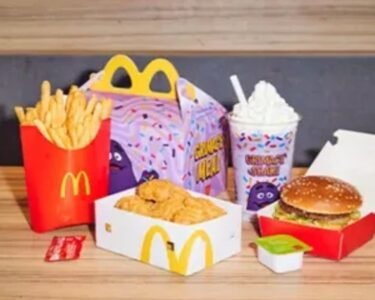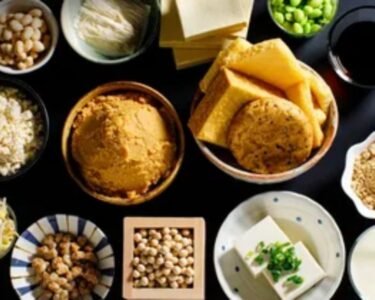You know that feeling? That afternoon slump, the constant craving for something sweet, or just that general sense of ‘blah’? Yeah, me too. And honestly, for a lot of folks I talk to, it comes down to sugar. We’re bombarded with it, even in foods we think are healthy.
That’s why I wanted to create something straightforward: a 14-day no sugar diet food list that anyone can follow. Seriously, no fancy ingredients or complicated recipes. Just real food, and a simple plan to help you ditch the sugar.
Look, I get it. Starting a no-sugar thing can feel overwhelming. You’re wondering what you can eat, if you’ll survive without your favorite treats, and if it’s even worth it. Trust me, it is. This isn’t about deprivation, it’s about giving your body a break and rediscovering how good you can feel.
We’ll walk through exactly what to expect on this 14-day no sugar challenge, what foods to grab at the grocery store, and even give you some easy meal ideas. So, if you’re ready to kick those sugar cravings and feel more energized, let’s get started. You’ve got this!
What Is a No Sugar Diet?
So, what exactly is a no sugar diet? It’s not just about skipping dessert. It’s about a mindful shift away from added sugars, and even dialing back on natural sugars, to give your body a real reset.
Think of it as a way to refocus on whole, unprocessed foods. We’re talking about leaning into natural sweetness from fruits and vegetables, instead of relying on the processed stuff.
This approach can change things. You might notice fewer cravings, more energy, and even some weight loss. Many people find their taste buds reset, making healthier choices easier.
It’s important to remember, this isn’t necessarily a forever thing. A 14-day no sugar diet, or even a shorter no sugar challenge, can be a great way to kickstart healthier habits. Then, you can make more informed choices about sugar intake long-term.
It’s about being aware of where sugar hides and choosing foods that fuel your body, not just your cravings. This sugar free foods approach can make a real difference.
What to Expect on a 14-Day No Sugar Diet
Starting a 14-day no sugar diet? You’re probably wondering what that’s going to feel like. It’s a big change for your body, no doubt. And while the payoff can be pretty amazing, there’s an adjustment period. So, let’s talk about what you might expect, day by day:
- Days 1-2: Finding Your Balance: Your body’s starting to find a new rhythm. Those sugar spikes and crashes? They’re fading. Your body’s learning to use fat for fuel, which is a good thing!
- Days 3-6: The Cravings Hit (But They Won’t Last): This is where it gets real. Sugar withdrawal is a thing, and you might feel it. Headaches, tiredness, cravings – it’s all part of the process. Hang in there, it’s temporary.
- Days 7-9: Hello, New Taste Buds!: This is where the magic happens. Suddenly, things taste different. You’ll start noticing the natural sweetness in veggies, and those sugary treats? Not so appealing anymore.
- Days 10-14: Energy Boost!: You’re cruising now. Your body’s running on fat, and it’s a much smoother ride. You’ll feel more consistently energized, and less reliant on those quick sugar fixes.
- Day 15: Celebrate You!: You did it! You completed the 14 day no sugar challenge. You deserve to celebrate this achievement. This is a huge accomplishment, and you’ve taken a massive step towards a healthier you.
Remember, this is your journey. Listen to your body, be patient, and celebrate every small victory. You are doing this for your health, and you deserve to feel great.
Foods to Eat and Avoid During the 14-Day Sugar Detox
To make your sugar-free diet work, you must be aware of what to eat and what to avoid. Below, we’ve covered the foods that will support your 14 day sugar detox journey and those you should stay away from to keep you on track.
Foods to Eat:
- High-Quality Proteins: Provide essential building blocks for the body, supporting muscle health and satiety.
- Starchy & Non-starchy Vegetables: Offer a wealth of vitamins, minerals, and fiber, promoting overall well-being. Non-starchy vegetables can be enjoyed in larger quantities, while starchy vegetables should be consumed in moderation.
- Nuts and Seeds: Deliver healthy fats, fiber, and protein, contributing to heart health and satiety.
- Healthy Fats: Support hormone production, and nutrient absorption in the body and can provide sustained energy.
- Low-Sugar Fruits: Offer natural sweetness and essential vitamins, while keeping sugar intake in check.
- Whole Grains: Provide complex carbohydrates and fiber, supporting digestive health and sustained energy.
- Beans and Lentils: Excellent sources of plant-based protein and fiber, good to promote satiety and digestive health.
- Fermented Foods: Support gut health and digestion through beneficial probiotics.
- Herbs and Spices: Enhance flavor without added sugars, and many offer antioxidant benefits.
- Condiments/Misc: Add flavor and variety, but should be chosen carefully to avoid hidden sugars.
- Drinks: Essential to keep your body hydrated, and support overall bodily functions.
Foods to Avoid:
- Added Sugars: Avoid processed foods like pre-packaged sugary snacks, frozen pasta dinners, meat pies, and simmer sauces; these often contain many hidden grams of sugar.
- Pre-made Desserts: Limit pre-made desserts such as pudding, flavored yogurt, frozen fruit cakes and pies, ice cream and cheesecakes, and sweet biscuits and muffins.
- Sugary Drinks and Beverages: Avoid sugary drinks and beverages such as cola, fizzy drinks, store-bought fruit juices and smoothie mixes, sweetened teas, and energy drinks; these are often laden with lots of sugar.
- Refined Carbohydrates: Limit refined carbohydrates such as white bread, bakery and pre-packaged pastries, white rice, and pasta, all of which can spike your blood sugar levels unnecessarily.
- Sweeteners: Avoid sweeteners such as high fructose corn syrup, cane sugar, dextrose, and maltose.
14-Day No Sugar Diet Food List
Finally, here’s the list you’ve been looking for: the best foods with no sugar to focus on during your 14-day no sugar diet challenge.
Each of these foods is chosen carefully. They have almost no added sugar, and are also low in their natural sugar content. This 14-day no sugar diet food list will help you get the most out of your journey to a healthier you.
High-Quality Proteins (0.8-1g protein per lb of body weight, spread throughout the day):
- Chicken
- Turkey
- Beef
- Fish (salmon, cod, tuna, mahi-mahi, etc.)
- Shellfish (shrimp, crab, lobster, scallops, etc.)
- Eggs
- Tofu, tempeh, and edamame
- Unsweetened Greek Yogurt
- Cottage Cheese
Non-Starchy Vegetables (at least 1 cup with each meal):
- Arugula
- Swiss Chard
- Collard Greens
- Kale
- Lettuce (various types)
- Spinach
- Broccoli
- Brussels Sprouts
- Cauliflower
- Cabbage (red, green, savoy)
- Asparagus
- Bell Peppers (all colors)
- Cucumbers
- Celery
- Green Beans
- Zucchini
- Eggplant
- Artichokes
- Fennel
- Onions (all types)
- Tomatoes
- Radishes
- Sugar Snap Peas
- Bok Choy
- Hearts of Palm
- Jicama
Starchy Vegetables (up to ½ cup with meals, if desired):
- Sweet Potatoes
- Yams
- Carrots
- Butternut Squash
- Acorn Squash
- Delicata Squash
- Kabocha Squash
- Green Peas
Nuts and Seeds (1-2 small handfuls per day):
- Almonds
- Walnuts
- Pecans
- Macadamia Nuts
- Chia Seeds (1-2 tablespoons per day)
- Flax Seeds (ground, 1-2 tablespoons per day)
- Pumpkin Seeds
- Sunflower Seeds
- Brazil Nuts
- Cashews
- Pistachios
- Hazelnuts
- Hemp Seeds
- Sesame Seeds
Healthy Fats (1-2 tablespoons of oil/fat, and 1 serving of avocado/nuts/seeds per meal):
- Avocados
- Olive Oil (extra virgin)
- Coconut Oil
- Avocado Oil
- Grass-fed Ghee
- Grass-fed Butter
- Olives
Low-Sugar Fruits (1-2 cups daily, spread throughout the day):
- Blueberries
- Raspberries
- Strawberries
- Blackberries
- Green Apples
- Pears
- Grapefruit
- Lemons
- Limes
- Cherries
- Nectarines
- Oranges
- Tangerines
- Peaches
- Plums
- Kiwi
- Pomegranate
- Watermelon
Whole Grains (up to ½ cup cooked, with meals, if no starchy vegetable):
- Quinoa (cooked)
- Brown Rice (cooked)
- Rolled Oats (unsweetened)
- Barley (cooked)
- Buckwheat (cooked)
- Rye (cooked)
- Amaranth (cooked)
- Farro (cooked)
- Millet (cooked)
- Couscous (whole wheat cooked)
Beans and Lentils (½ cup cooked, with meals):
- Lentils (cooked)
- Chickpeas (cooked)
- Black Beans (cooked)
- Kidney Beans (cooked)
- Pinto Beans (cooked)
- Black-Eyed Peas (cooked)
- Lima Beans (cooked)
Fermented Foods (1-2 servings daily, no added sugars):
- Sauerkraut
- Kimchi
- Pickles (unsweetened)
- Pickled Vegetables (carrots, asparagus, okra)
Herbs and Spices (as desired, throughout cooking):
- Basil
- Oregano
- Rosemary
- Thyme
- Cinnamon
- Turmeric
- Ginger
- Garlic
- All other herbs and spices
Condiments/Misc (no added sugars, check labels carefully):
- Apple Cider Vinegar
- Sugar-free Mustard
- Hot Sauce (sugar-free)
- Coconut Aminos
- Salsa (sugar-free)
Drinks (throughout the day):
- Water
- Unsweetened Herbal Tea (various types)
- Black Coffee
- Unsweetened Iced Tea
- Matcha (unsweetened)
Tips for a Successful 14-Day Sugar Detox
- Always check food labels carefully. Many grocery store items contain added sugar, even those labeled all-natural, organic, or gluten-free. Avoid these.
- Pair carbohydrates with protein and healthy fats. This helps keep your energy steady and stops sugar cravings.
- Plan your meals and snacks ahead of time. This makes it easier to avoid sugary foods when you’re hungry.
- Drink plenty of water. It helps control sugar cravings and keeps your body working well.
- Use spices like cinnamon or vanilla to add sweet flavor without sugar.
- Find healthy ways to feel good, like exercise or going for a walk, instead of reaching for sugary treats.
Health Benefits of 14 Day No Sugar Challenge
A 14-day no-sugar challenge can significantly improve your health. This no sugar diet can lead to a range of positive changes, both physically and mentally. Here’s what you can expect:
- Consistent Energy: Eliminating sugar’s ups and downs leads to steady energy throughout the day, reducing mood swings.
- Natural Weight Management: Cutting out sugary calories naturally lowers intake, supporting healthy weight loss.
- Balanced Blood Sugar: Reducing sugar improves insulin sensitivity and stabilizes blood sugar, which is key for managing diabetes risk.
- Heart Health Support: Lowering sugar intake helps maintain healthy blood pressure and cholesterol, reducing heart disease risk.
- Clearer Skin: Less sugar means less inflammation, leading to clearer, more radiant skin.
- Better Digestion: Removing refined sugars promotes a healthier gut, reducing bloating and discomfort.
- Reduced Sugar Cravings: Your taste buds adapt, lessening your desire for sugary foods over time.
- Improved Focus: Stable blood sugar enhances concentration and mental clarity.
- Lower Inflammation: Reducing sugar helps decrease overall inflammation in the body.
- Improved Sleep: Eliminating sugar can lead to more restful and restorative sleep.
14-Day No Sugar Diet Menu: Sample Meal Plan
Here’s a sample 14-day menu designed to help you navigate your sugar detox with ease, using the foods from our no sugar food list:
14-Day No Sugar Diet Menu: Sample Meal Plan
This plan focuses on whole foods, lean proteins, healthy fats, and low-sugar fruits to help you navigate your sugar detox effectively.
Day 1
- Breakfast: Savory breakfast bowl with scrambled eggs, sautéed mushrooms, and a sprinkle of herbs.
- Lunch: Large mixed green salad with grilled shrimp, avocado, and a lemon-tahini dressing.
- Dinner: Baked chicken breast with roasted root vegetables (carrots, parsnips) and a side of steamed spinach.
Day 2
- Breakfast: Cottage cheese with a handful of blueberries and a sprinkle of cinnamon.
- Lunch: Tuna salad (made with avocado instead of mayo) wrapped in large lettuce leaves.
- Dinner: Ground turkey and zucchini skillet with diced tomatoes and spices.
Day 3
- Breakfast: Almond milk smoothie with spinach, a scoop of protein powder, and a few raspberries.
- Lunch: Leftover ground turkey and zucchini skillet.
- Dinner: Baked cod with a side of steamed green beans and a lemon squeeze.
Day 4
- Breakfast: Oatmeal (unsweetened) with sliced strawberries and chia seeds.
- Lunch: Large salad with grilled salmon, cucumber, and a light vinaigrette.
- Dinner: Chicken and vegetable skewers (peppers, onions, zucchini) with a side of cauliflower rice.
Day 5
- Breakfast: Plain Greek yogurt with a small amount of chopped walnuts and a few blackberries.
- Lunch: Chickpea salad with cucumber and tomato.
- Dinner: Ground beef and cabbage stir-fry with ginger and garlic.
Day 6
- Breakfast: Avocado slices with smoked salmon.
- Lunch: Leftover ground beef and cabbage stir-fry.
- Dinner: Shrimp and asparagus sautéed in olive oil with garlic and lemon.
Day 7
- Breakfast: Chia seed pudding made with almond milk, a few raspberries, and a sprinkle of almonds.
- Lunch: Chicken salad (made with avocado-based dressing) in lettuce wraps.
- Dinner: Baked turkey breast with roasted broccoli and a side salad.
Day 8
- Breakfast: Scrambled eggs mixed with sautéed zucchini and onions.
- Lunch: Large salad with leftover baked turkey breast.
- Dinner: Salmon cakes with a side of sautéed kale.
Day 9
- Breakfast: Smoothie with almond milk, spinach, cucumber and protein powder.
- Lunch: Leftover Salmon Cakes and kale.
- Dinner: Chicken and vegetable curry made with coconut milk and spices (no added sugar).
Day 10
- Breakfast: Plain Greek yogurt with cinnamon and a few chopped almonds.
- Lunch: Leftover chicken curry.
- Dinner: Baked cod with roasted cauliflower and a side salad.
Day 11
- Breakfast: Avocado toast with everything bagel seasoning and a fried egg.
- Lunch: Tuna salad lettuce wraps.
- Dinner: Turkey meatballs with zucchini noodles and a tomato basil sauce.
Day 12
- Breakfast: Scrambled eggs with mushrooms and herbs.
- Lunch: Leftover turkey meatballs and zucchini noodles.
- Dinner: Shrimp and vegetable stir-fry with cauliflower rice.
Day 13
- Breakfast: Cottage cheese with a few blueberries and a sprinkle of chia seeds.
- Lunch: Large mixed green salad with grilled chicken.
- Dinner: Baked chicken thighs with roasted Brussel sprouts.
Day 14
- Breakfast: Almond milk smoothie with spinach, protein powder, and a dash of almond butter.
- Lunch: Leftover chicken thighs and Brussel sprouts.
- Dinner: Baked salmon with roasted asparagus and a side salad.
14-Day No Sugar Diet Related FAQs
What exactly is a 14-day no-sugar diet?
It’s a short-term dietary plan designed to eliminate added sugars and significantly reduce naturally occurring sugars for 14 days. This helps reset your taste buds and improve metabolic health.
What are the best foods to eat on a 14-day no-sugar diet?
For a 14-day no-sugar diet, prioritize lean proteins like chicken or fish, plenty of non-starchy vegetables such as broccoli or spinach, and healthy fats from avocados or nuts. Small portions of berries can satisfy a sweet craving. These foods help maintain stable blood sugar and provide essential nutrients.
What happens if you stop eating sugar for 30 days?
After 30 days of eliminating added sugar, you’ll likely observe a significant shift in your overall well-being. Your body begins to adapt to a more efficient energy system, and you’ll find several key improvements:
- You’ll have consistent energy levels, without the sugar crashes.
- Weight management becomes easier.
- Skin often looks clearer.
- Sugar cravings become much less.
- Blood sugar levels get better.
- You may sleep better and focus more easily.
What are the typical food items that contain concealed added sugars?
Look out for added sugars in processed foods, sauces, condiments, and even seemingly healthy items like yogurt and granola. Always read labels carefully.
What are effective ways to handle sugar cravings when detoxing?
Stay hydrated, eat regular meals with protein and healthy fats, and engage in activities that boost dopamine, like exercise or spending time in nature.



